Sour or Sweet?
Sweet Cherries
- Best for eating fresh
- Climate: Milder areas with cool winters
- Popular varieties:
- Bing – Large, dark red, juicy
- Rainier – Yellow with red blush, sweet and delicate
- Lapins – Self-pollinating, large and firm
- Stella – Self-pollinating, deep red
Sour (Tart) Cherries
- Best for pies, jams, baking
- Climate: Tolerates colder winters
- Popular varieties:
- Montmorency – Most common sour cherry in the U.S.
- North Star – Dwarf, hardy, early producing
- Balaton – Darker, sweeter than Montmorency
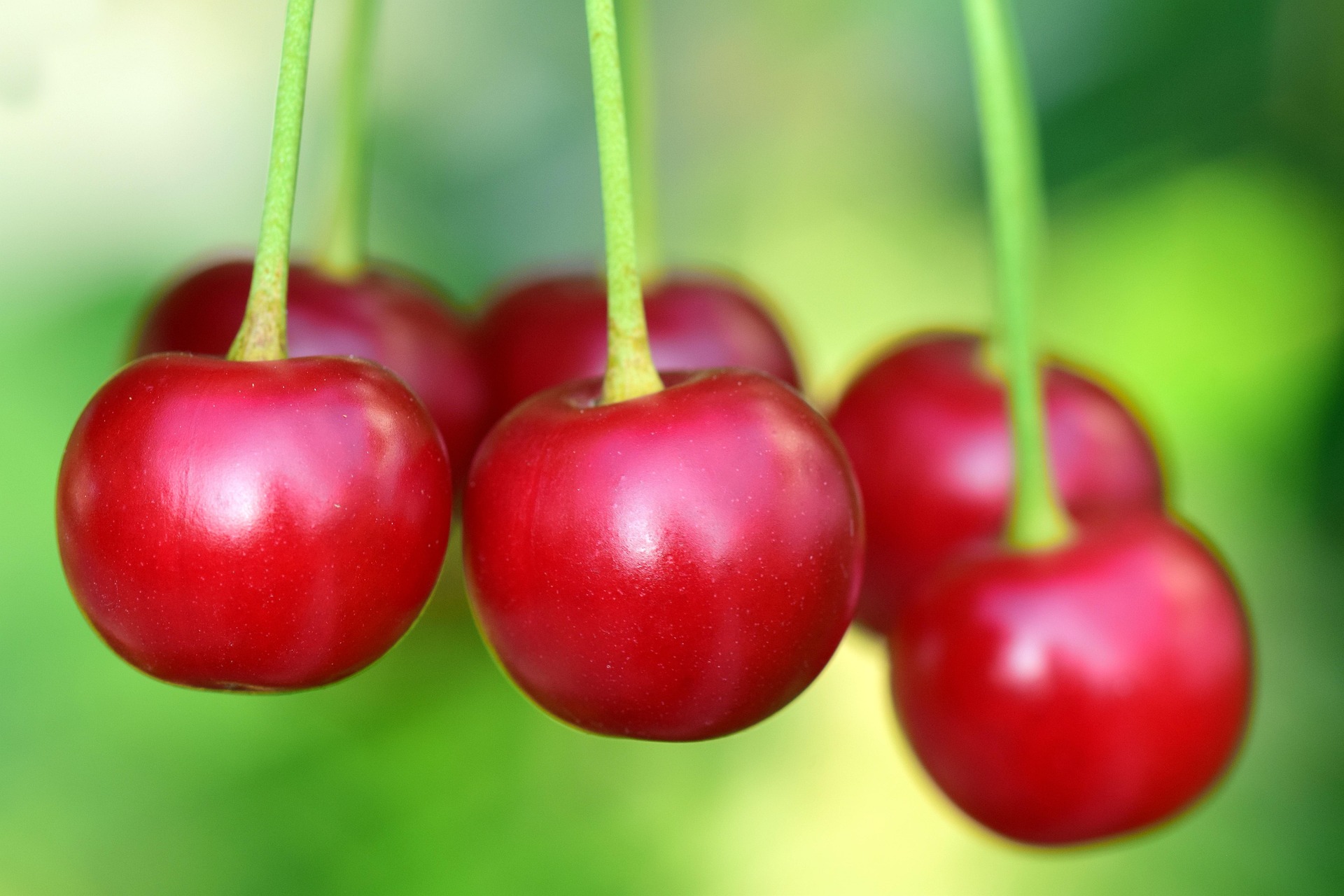
Sweet Cherries
Bing
Bing cherries are a popular choice to grow for several strong reasons, especially if you’re looking for sweet, high-quality fruit. Here’s why Bing cherries are considered good to grow:
1. Excellent Fruit Quality
- Flavor: Exceptionally sweet, rich, and juicy.
- Texture: Firm and meaty, ideal for fresh eating.
- Appearance: Large, deep red to mahogany color—market favorite.
2. High Yield Potential
- Once established, Bing cherry trees produce abundant crops during peak season (mid-to-late summer).
3. Commercial and Home-Grower Favorite
- Bing is the #1 sweet cherry variety in the U.S., making it a reliable choice if you’re growing for farmers markets or personal use.
4. Long Shelf Life
- Bing cherries store and transport well, unlike some other sweet varieties.
Things to Keep in Mind
- Pollination: Bing is not self-pollinating. You’ll need a pollinator like Stella, Van, or Rainier nearby.
- Climate Sensitivity: Needs cold winters (chill hours) but is sensitive to late frosts during bloom time.
- Disease: Can be prone to cherry diseases like bacterial canker and brown rot, so good airflow and preventive care are important.
Ideal Conditions for Bing Cherries:
- USDA Zones: 5–8
- Sunlight: Full sun (at least 6–8 hours daily)
- Soil: Well-drained, loamy soil with moderate moisture
- Spacing: 18–25 feet for standard trees; 12–15 feet for semi-dwarf
Rainier
Rainier cherries are prized for their unique flavor and appearance, making them a great choice for both home gardeners and small-scale orchardists. Here’s why they’re good to grow:
1. Exceptional Flavor
- Taste: Very sweet, with a mild, honey-like flavor and low acidity.
- Often considered more delicate and flavorful than Bing cherries.
- Popular with those who prefer a sweeter, less tart cherry.
2. Distinct Appearance
- Color: Yellow-golden skin with a red blush—visually striking and easy to distinguish.
- Flesh: Light-colored and juicy, often considered a gourmet cherry.
3. High Market Value
- Rainier cherries typically sell for a premium at farmers markets and stores due to their unique look and flavor.
- High demand can make them a good investment crop.
4. Good Pollinator Pair
- While not self-pollinating, Rainier works well as a pollinator for Bing, Van, Lapins, and other sweet cherry varieties.
- Planting Rainier with a companion cherry increases overall orchard productivity.
Considerations
- Not as hardy as darker cherries—Rainier is more susceptible to:
- Rain cracking near harvest
- Bird damage (the lighter fruit is more visible)
- Needs well-drained soil and full sun, and prefers mild, dry summers.
- Pollination required: Needs another sweet cherry variety nearby that blooms at the same time (e.g., Bing, Van).
Ideal Growing Conditions:
- USDA Zones: 5–8
- Sunlight: Full sun (6–8 hours daily)
- Soil: Well-drained, loamy or sandy
- Spacing: 15–25 feet depending on rootstock
Stella
Stella cherries are an excellent choice for both home gardeners and small orchards, thanks to their unique combination of self-pollination, productivity, and delicious fruit. Here’s why Stella cherries are good to grow:
1. Self-Pollinating
- No pollinator needed, unlike most sweet cherries.
- Ideal for small gardens or growers with limited space.
- Can also serve as a pollinator for other cherry varieties like Bing, Rainier, and Van.
2. Delicious Fruit
- Sweet, dark red cherries with firm, juicy flesh.
- Excellent for fresh eating, baking, and preserves.
- Good flavor and size—comparable to Bing.
3. Early and Heavy Producer
- Begins fruiting at a relatively young age (within 3–5 years).
- Produces large, consistent crops of cherries.
- Blooms earlier than some varieties and ripens mid-season.
4. Compact Growth
- Naturally smaller tree, especially on dwarf or semi-dwarf rootstock.
- Easier to maintain, harvest, and net against birds.
- Suitable for backyard growing or limited space.
5. Hardy and Adaptable
- Grows well in USDA Zones 5–8.
- Tolerates a range of soil types if well-drained.
- More resistant to cracking than some tender varieties like Rainier.
Considerations
- Needs full sun and good air circulation to avoid fungal issues like cherry leaf spot or canker.
- May still benefit from bird netting—fruit is highly attractive to birds.
- Prune to maintain shape and airflow.
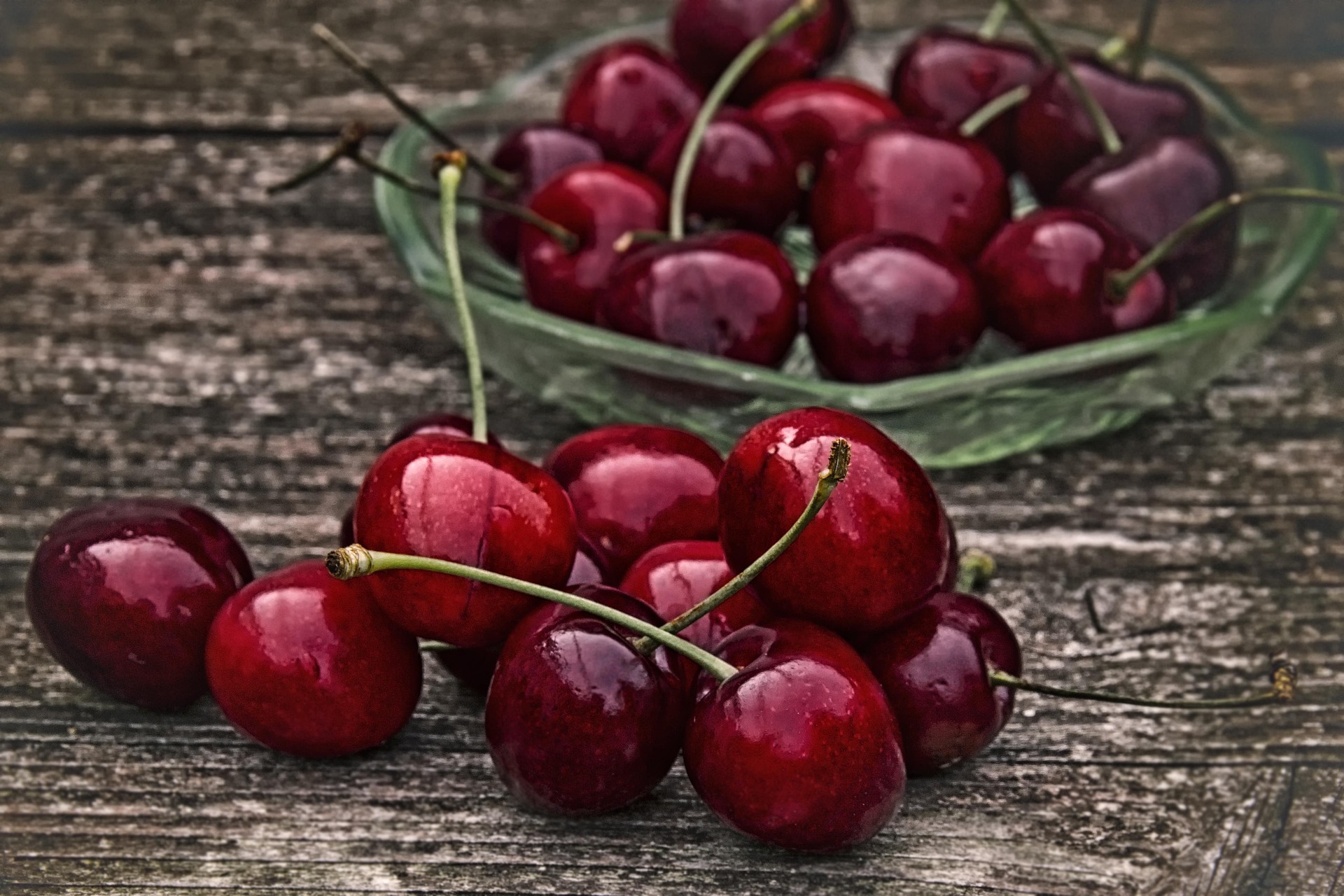
Pollination Chart
Sweet Cherry Pollination Chart, sweet cherry trees typically require cross-pollination, unless they are self-fertile.
Sweet Cherry Pollination Chart
| Variety | Self-Fertile | Good Pollinators | Notes |
|---|---|---|---|
| Bing | No | Rainier, Stella, Van, Black Tartarian | Very popular, needs a pollinator |
| Rainier | No | Bing, Van, Stella, Lapins | Beautiful yellow-red fruit |
| Stella | ✅ Yes | Pollinates Bing, Rainier, Van | Great all-around pollinator |
| Lapins | ✅ Yes | Pollinates Bing, Rainier, Van | Also known as “Cherokee” |
| Van | No | Bing, Rainier, Stella, Lapins | Blooms mid-season |
| Black Tartarian | No | Bing, Van, Stella | Early bloomer, good pollinator |
| Sweetheart | ✅ Yes | Pollinates others, blooms late | Late-season fruit |
| Kristin | No | Sam, Van, Stella | Cold hardy (Zones 4–7) |
| Sam | No | Stella, Van, Rainier | Good for colder zones |
| Hudson | No | Needs compatible pollinator (e.g., Stella) | Late bloomer, firm fruit |
Self-Fertile (Don’t Need a Pollinator)
- Stella
- Lapins
- Sweetheart
- Selah
- Sunburst
- BlackGold
These are ideal for small gardens or single-tree growers.
Important Pollination Tips
- Timing matters: Choose varieties that bloom at the same time.
- Plant within 100 feet of each other (closer is better).
- Bees are essential: Encourage pollinators by avoiding insecticides during bloom.
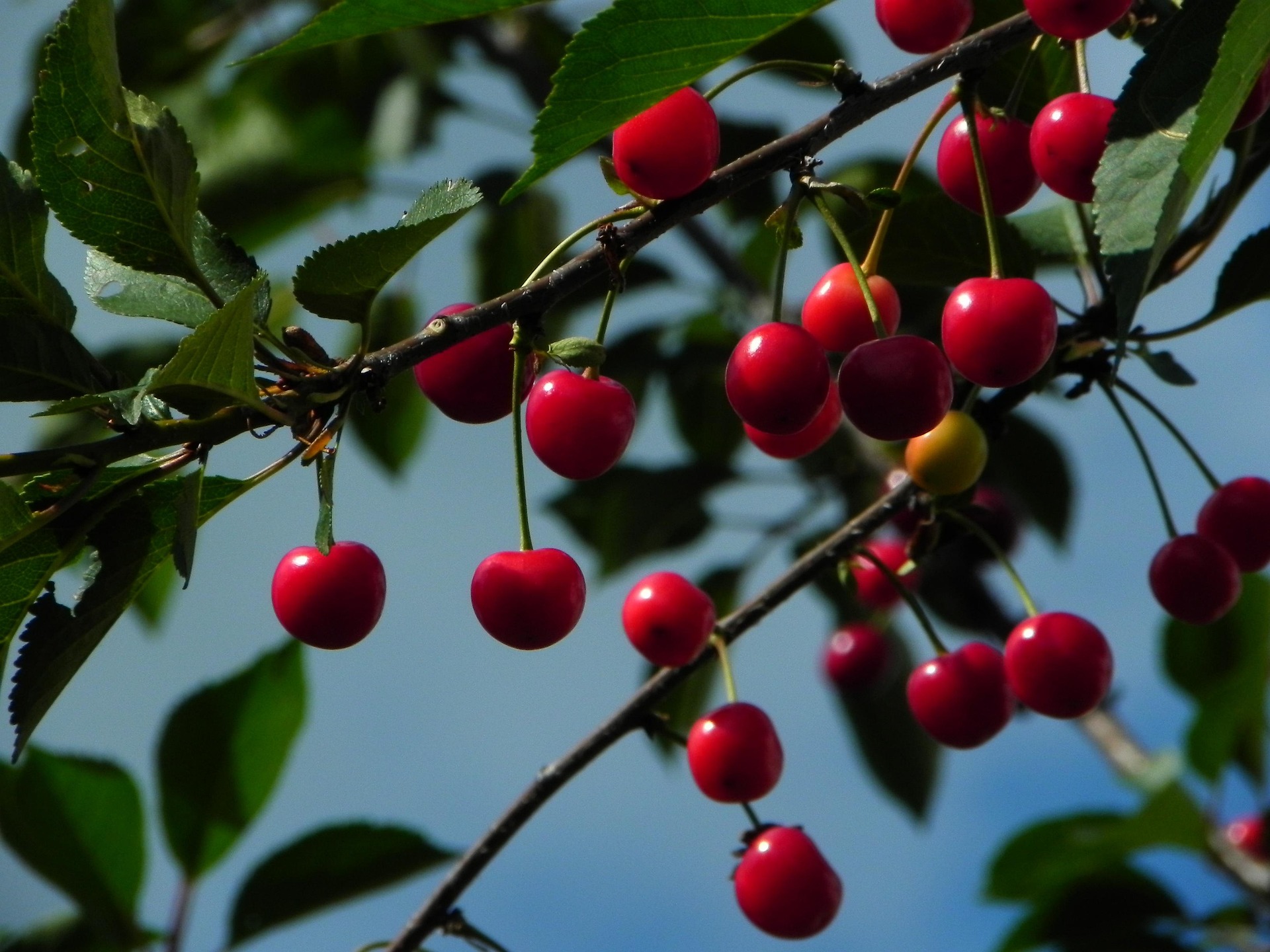
Sour Cherries
Montmorency
Montmorency cherries are one of the best tart cherry varieties to grow, especially for people who enjoy baking, preserving, or producing juice. They’re reliable, productive, and well-adapted to colder climates. Here’s why Montmorency cherries are good to grow:
1. Excellent for Culinary Use
- Tart flavor that’s perfect for pies, jams, sauces, juice, and drying.
- The gold standard for sour cherries in baking and commercial processing.
- Also high in antioxidants and often used in health supplements.
2. Very Cold Hardy
- Thrives in USDA Zones 4–8, making it a great option for northern climates.
- More tolerant of late frosts than sweet cherry varieties.
3. Heavy, Reliable Producer
- Known for its consistent and abundant yields year after year.
- Typically ripens in mid-summer, with bright red, firm fruit.
4. Self-Pollinating
- Doesn’t require a second tree for fruit production.
- Great for small yards or limited-space growers.
5. Compact and Manageable Tree
- Usually grows to 12–18 feet tall, but can be kept smaller with pruning.
- Easier to net and harvest compared to larger sweet cherry trees.
Things to Watch For
- Like all cherries, it’s susceptible to birds, brown rot, and cherry leaf spot, so regular monitoring and maintenance are helpful.
- Needs well-drained soil and full sun for best performance.
In Summary:
Montmorency cherries are ideal if you want a cold-hardy, self-pollinating tree that delivers large crops of tart cherries perfect for cooking, preserving, or making juice.
North Star
North Star cherries are a fantastic choice for home gardeners, especially in colder climates or smaller spaces. Here’s why North Star cherries are good to grow:
1. Naturally Dwarf Tree
- Grows only 8–12 feet tall, making it perfect for small yards, urban gardens, or container growing.
- Easy to prune, net, and harvest—no ladder needed!
2. Self-Pollinating
- No need for a second tree to get fruit.
- Great for single-tree growers or those with limited space.
3. Tart but Versatile Fruit
- Bright red, sour cherries with excellent flavor.
- Ideal for pies, jams, sauces, drying, and even fresh eating if you like tart cherries.
- Good for juicing and high in antioxidants.
4. Cold Hardy and Tough
- Developed by the University of Minnesota, it thrives in USDA Zones 4–8.
- Extremely winter-hardy, tolerates harsh northern winters better than many other cherry types.
5. Consistent and Early Producer
- Begins fruiting within 2–3 years of planting.
- Ripens in mid to late summer, with high yields year after year.
Things to Watch For
- Tart cherries are generally more resistant to pests and diseases than sweet cherries, but you should still watch for:
- Cherry leaf spot
- Birds (netting may be needed)
- Requires full sun and well-drained soil.
In Summary:
North Star cherries are a top choice if you’re looking for a cold-hardy, compact, and self-pollinating tart cherry tree that delivers great fruit for baking and preserving—especially in smaller or colder gardens.

Balaton
Balaton cherries are a great tart cherry variety to grow, especially if you want richer flavor and more versatility than the standard Montmorency. Here’s why Balaton cherries are good to grow:
1. Rich, Sweet-Tart Flavor
- Darker and sweeter than Montmorency, with a complex, rich flavor.
- Excellent for pies, jams, wine, juice, and fresh eating (if you like tangy fruit).
- Popular in European-style recipes and desserts.
2. Deep Red Color
- Both the skin and flesh are dark red, unlike Montmorency which has yellow flesh.
- Ideal for making visually striking preserves and baked goods.
3. Cold Hardy
- Grows well in USDA Zones 4–8.
- Bred in Hungary and introduced to the U.S. for greater hardiness and improved quality.
4. Productive Tree
- Produces large, firm cherries with good resistance to cracking.
- Harvests are usually mid to late season, after Montmorency.
5. Partially Self-Pollinating
- Can produce fruit on its own, but yields are much higher with a pollinator nearby (like Montmorency or another tart cherry).
- Great option for small orchards or mixed plantings.
Things to Consider
- Less widely planted, so sourcing trees may require more effort.
- Somewhat more susceptible to spring frost damage during bloom than Montmorency.
- Needs full sun, good air circulation, and well-drained soil.
In Summary:
Balaton cherries are ideal if you want a tart cherry with a richer, sweeter flavor and beautiful deep color. They’re productive, cold-hardy, and great for both culinary use and fresh eating—with a little more gourmet flair than standard sour cherries.
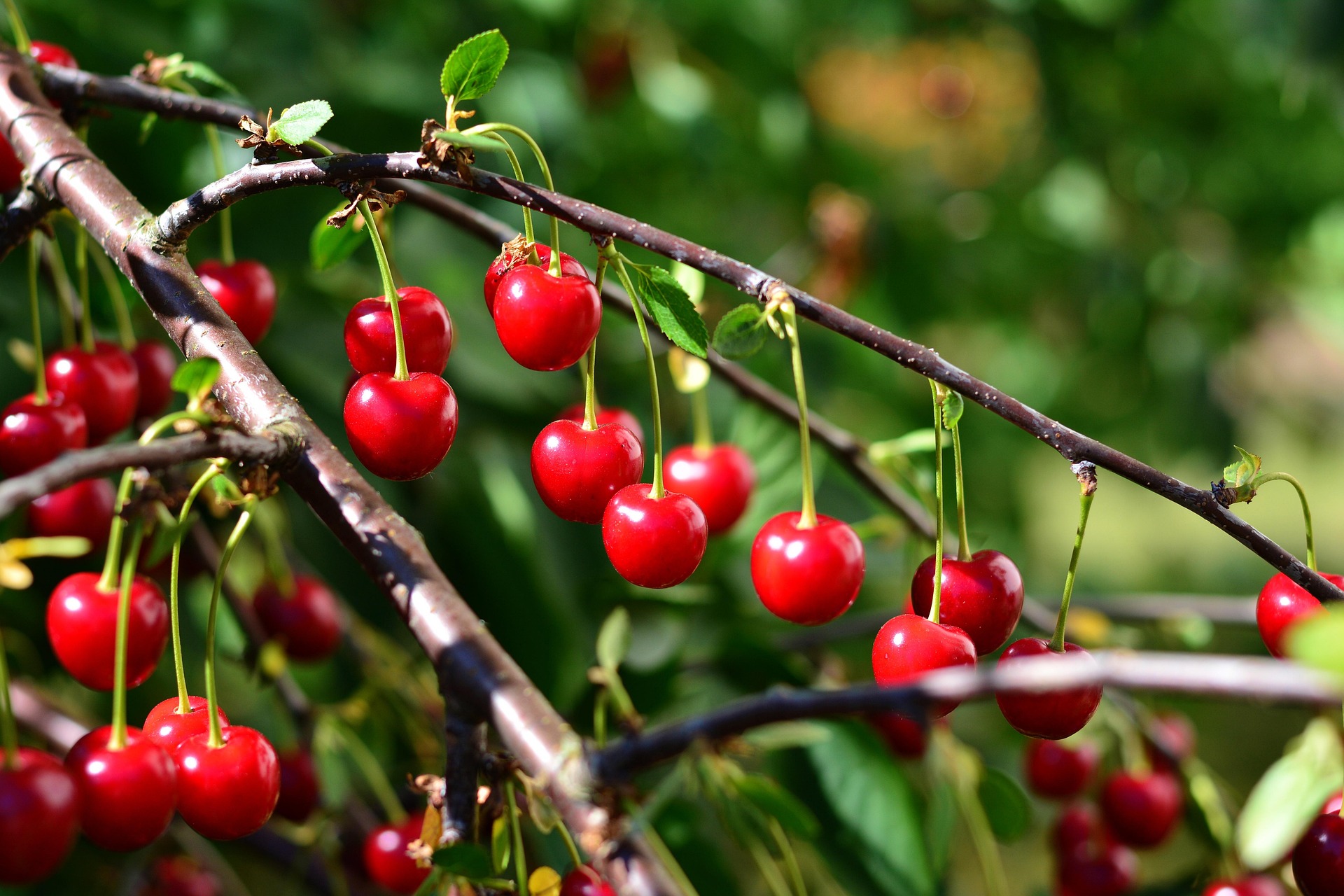
Pollination Chart
Sour (Tart) Cherry Pollination Chart, Most sour cherries are self-pollinating, which makes them easy to grow even in small spaces.
🍒 Sour Cherry Pollination Chart
| Variety | Self-Pollinating | Pollination Notes | Comments |
|---|---|---|---|
| Montmorency | ✅ Yes | Produces well alone | Most widely grown tart cherry |
| North Star | ✅ Yes | No pollinator needed | Naturally dwarf, great for small spaces |
| Balaton | ⚠️ Partially | Benefits from cross-pollination (e.g., Montmorency) | Larger, darker fruit with richer flavor |
| Meteor | ✅ Yes | Self-fruitful, good for colder regions | Compact and cold hardy |
| Danube (Erdi Bötermö) | ⚠️ Partially | Increased yield with another tart cherry nearby | Sweet-tart, European variety |
| Surefire | ✅ Yes | Reliable even in colder climates | Disease-resistant, bright red fruit |
| English Morello | ✅ Yes | Produces well on its own | Late-ripening, very tart, great for preserves |
Fully Self-Pollinating Sour Cherries
These varieties can produce fruit without another tree nearby:
- Montmorency
- North Star
- Meteor
- English Morello
- Surefire
Partially Self-Fertile Varieties
These trees will fruit on their own, but produce more and larger fruit with a second compatible tart cherry nearby:
- Balaton
- Danube
Pollination Tips for Tart Cherries
- Most bloom mid- to late-spring, so they often overlap for natural pollination.
- Plant within 50–100 feet of each other to allow bees to transfer pollen.
- Sour cherries attract pollinators well, but avoid spraying insecticides during bloom.
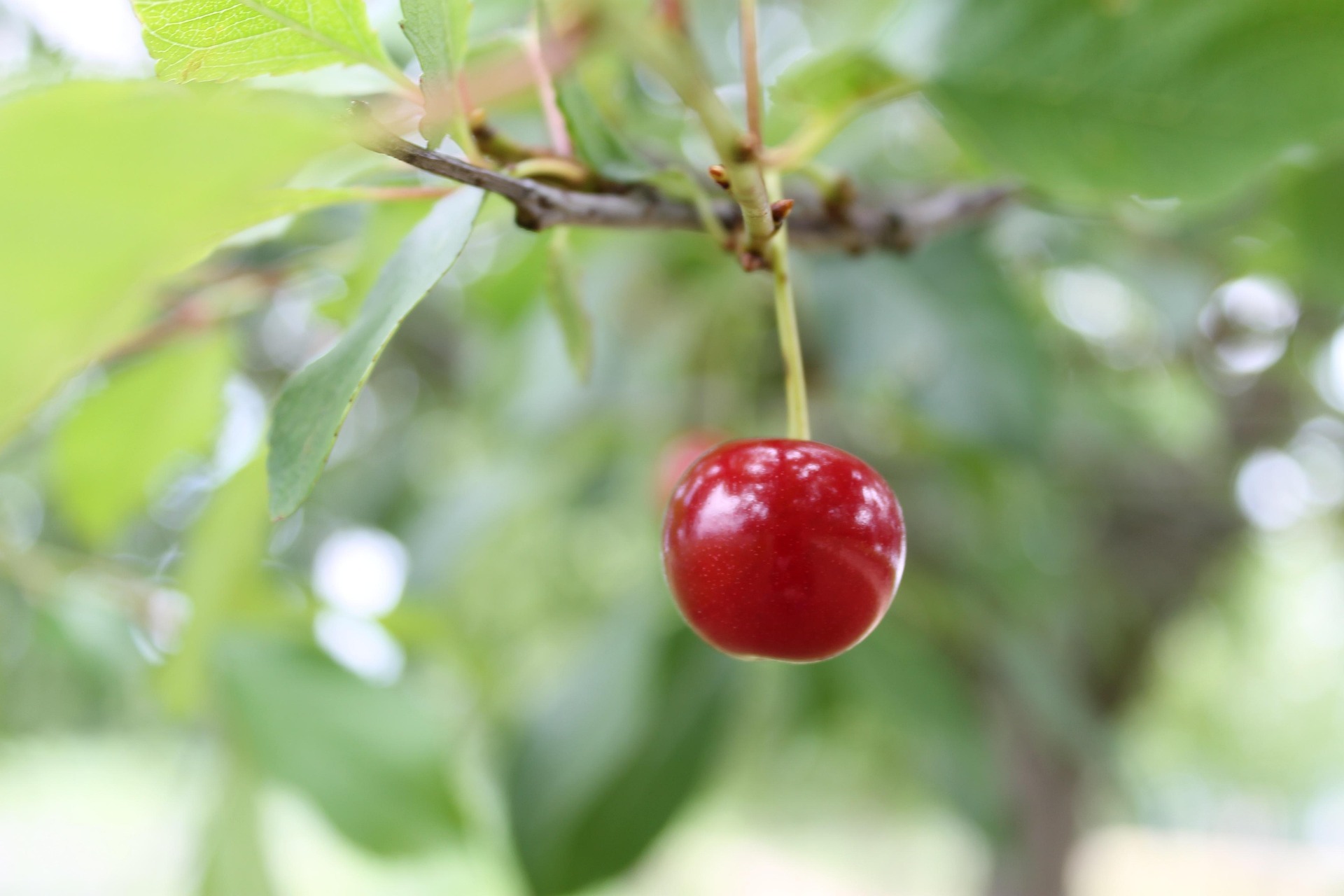
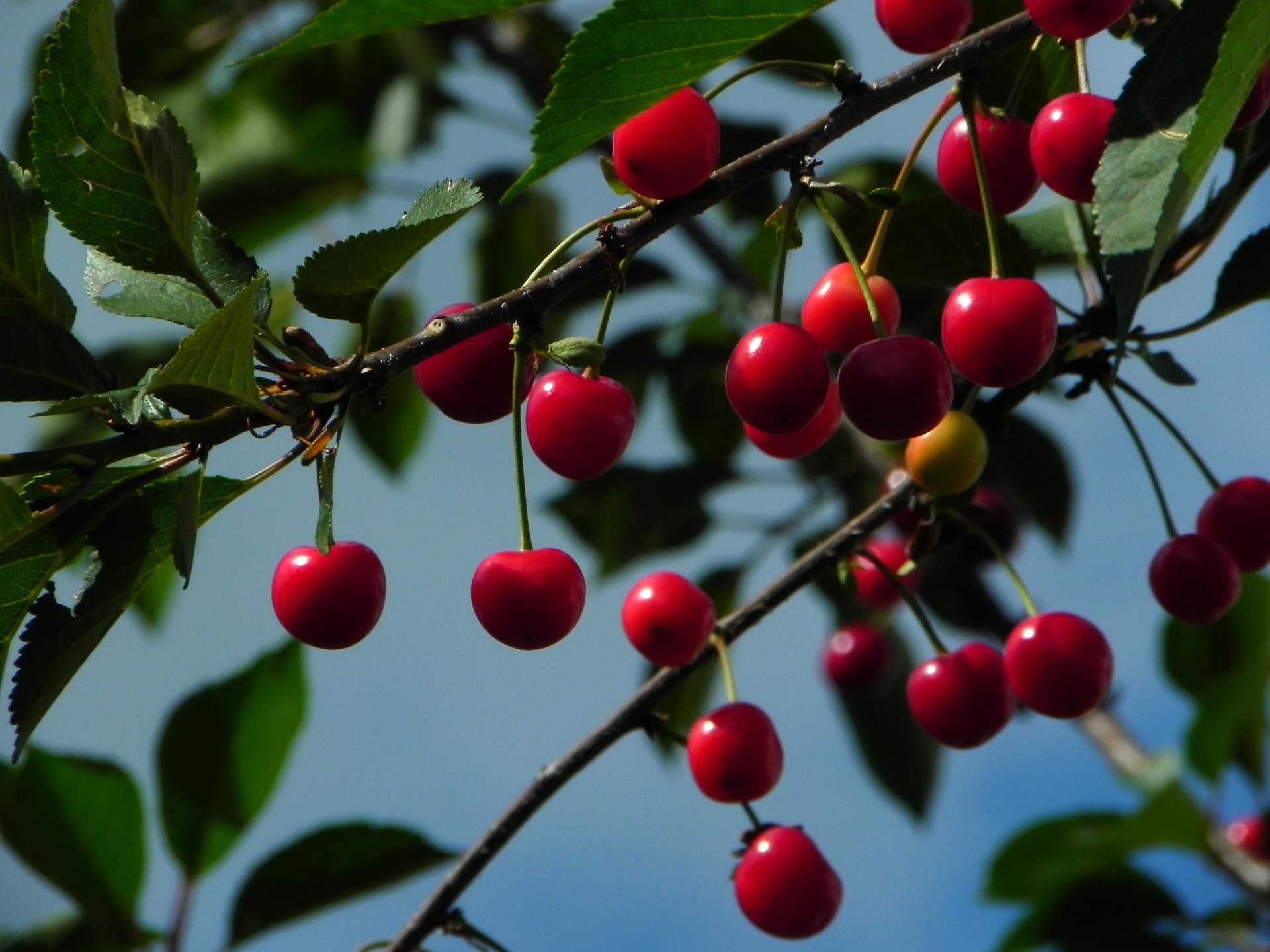
No responses yet